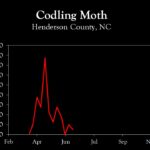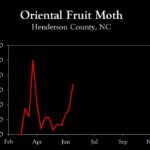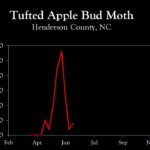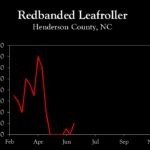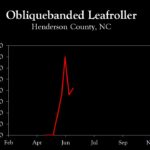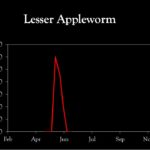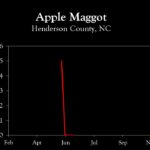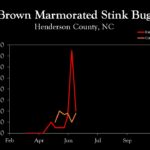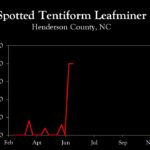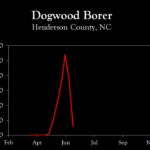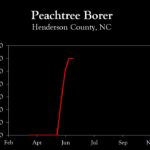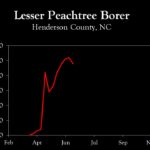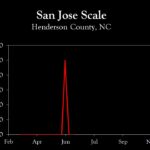WNC Orchard Insect Pest Populations – June 22, 2021
go.ncsu.edu/readext?804713
en Español / em Português
El inglés es el idioma de control de esta página. En la medida en que haya algún conflicto entre la traducción al inglés y la traducción, el inglés prevalece.
Al hacer clic en el enlace de traducción se activa un servicio de traducción gratuito para convertir la página al español. Al igual que con cualquier traducción por Internet, la conversión no es sensible al contexto y puede que no traduzca el texto en su significado original. NC State Extension no garantiza la exactitud del texto traducido. Por favor, tenga en cuenta que algunas aplicaciones y/o servicios pueden no funcionar como se espera cuando se traducen.
Português
Inglês é o idioma de controle desta página. Na medida que haja algum conflito entre o texto original em Inglês e a tradução, o Inglês prevalece.
Ao clicar no link de tradução, um serviço gratuito de tradução será ativado para converter a página para o Português. Como em qualquer tradução pela internet, a conversão não é sensivel ao contexto e pode não ocorrer a tradução para o significado orginal. O serviço de Extensão da Carolina do Norte (NC State Extension) não garante a exatidão do texto traduzido. Por favor, observe que algumas funções ou serviços podem não funcionar como esperado após a tradução.
English
English is the controlling language of this page. To the extent there is any conflict between the English text and the translation, English controls.
Clicking on the translation link activates a free translation service to convert the page to Spanish. As with any Internet translation, the conversion is not context-sensitive and may not translate the text to its original meaning. NC State Extension does not guarantee the accuracy of the translated text. Please note that some applications and/or services may not function as expected when translated.
Collapse ▲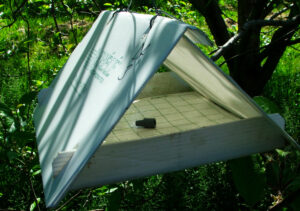 In elevations greater than about 2000 ft, such as Henderson, Haywood, and Wilkes Counties, this remains a time of relatively low insect activity. In Henderson County, codling moth degree day accumulations are about 940 DD, which coincides with almost 100% emergence of 1st generation adults and 80% of first generation egg hatch — it is highly unlikely that problems arise this late in the generation. The next critical time for codling moth will be about 1400 DD, which is not expected for at least two weeks.
In elevations greater than about 2000 ft, such as Henderson, Haywood, and Wilkes Counties, this remains a time of relatively low insect activity. In Henderson County, codling moth degree day accumulations are about 940 DD, which coincides with almost 100% emergence of 1st generation adults and 80% of first generation egg hatch — it is highly unlikely that problems arise this late in the generation. The next critical time for codling moth will be about 1400 DD, which is not expected for at least two weeks.
At lower elevations (<1000 ft), such as Cleveland and Lincoln Counties, codling moth DDs average about 1325. Hence, second generation flight has begun. When this generation requires control, pheromone trap captures often increase at about 1400-1450 DD. The next 7 days will be an important time to consider insecticidal control in these lower elevations.
Most people have applied an insecticide for tufted apple bud moth; for those that have not, the window of opportunity will remain open for about another week.
While we are in the midst of second generation oriental fruit moth flight at elevations ≥2000 ft, populations have been very low in commercial orchards. OFM is usually not an issue until later in the season (Aug/Sept), but with pyrethroid use since the arrival of BMSB, populations have declined considerably.
Learn more about southeastern apple insect pests at the Apple Insect Management page.
2021 Average Weekly Trap Captures
| HENDERSON COUNTY | |||
| Insects per trap | |||
| Jun 7 | Jun 14 | Jun 21 | |
| Codling moth | 0.0 | 2.0 | 1.0 |
| Oriental fruit moth | 13.0 | 17.0 | 34.0 |
| Tufted apple bud moth | 14.0 | 2.0 | 4.0 |
| Redbanded leafroller | 1.0 | 0.0 | 2.0 |
| Obliquebanded leafroller | 35.0 | 18.0 | 21.0 |
| Lesser appleworm | 4.0 | 0.0 | 0.0 |
| Apple maggot (abandoned and research orchards) | 0.0 | 0.0 | 0.0 |
| Brown marmorated stink bug (commercial) | 1.8 | 1.0 | 1.8 |
| Brown marmorated stink bug (unsprayed) | 1.5 | 7.5 | 2.0 |
| Spotted tentiform leafminer | 0.0 | 20.0 | 20.0 |
| Dogwood borer | 54.0 | 38.0 | 6.0 |
| Peachtree borer | 5.0 | 6.0 | 6.0 |
| Lesser peachtree borer | 51.0 | 52.0 | 48.0 |
| San Jose scale | 5.0 | 0.0 | 0.0 |
*Note that these averages illustrate only the timing of insect emergence and fluctuations in populations, and are not representative of population levels in any given orchard. The only way to have an accurate assessment of an individual orchard’s populations is to set up traps in that orchard.
2021 Accumulated Degree Days
| HENDERSON COUNTY | ||||
| Jun 7 | Jun 14 | Jun 21 | ||
| Codling moth (Biofix: April 10) |
6321 | 792 | 927 | |
| Oriental fruit moth (Biofix: March 27) |
988 | 1183 | 1353 | |
| Tufted apple bud moth (Biofix: April 30) |
629 | 824 | 994 | |
2021 Pest Trends (click to enlarge)
Visit WNC Orchard Insect Populations for archived posts.



